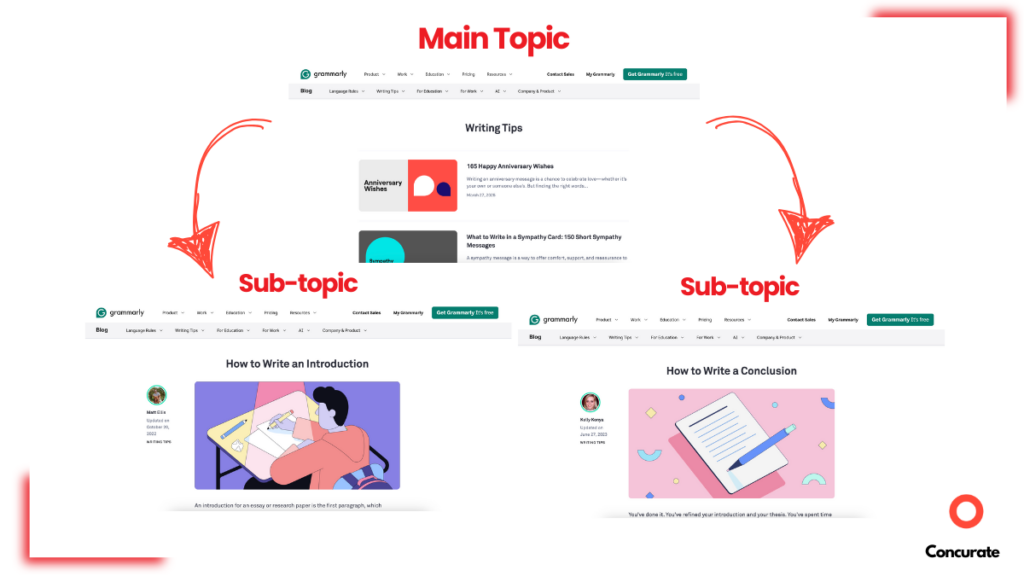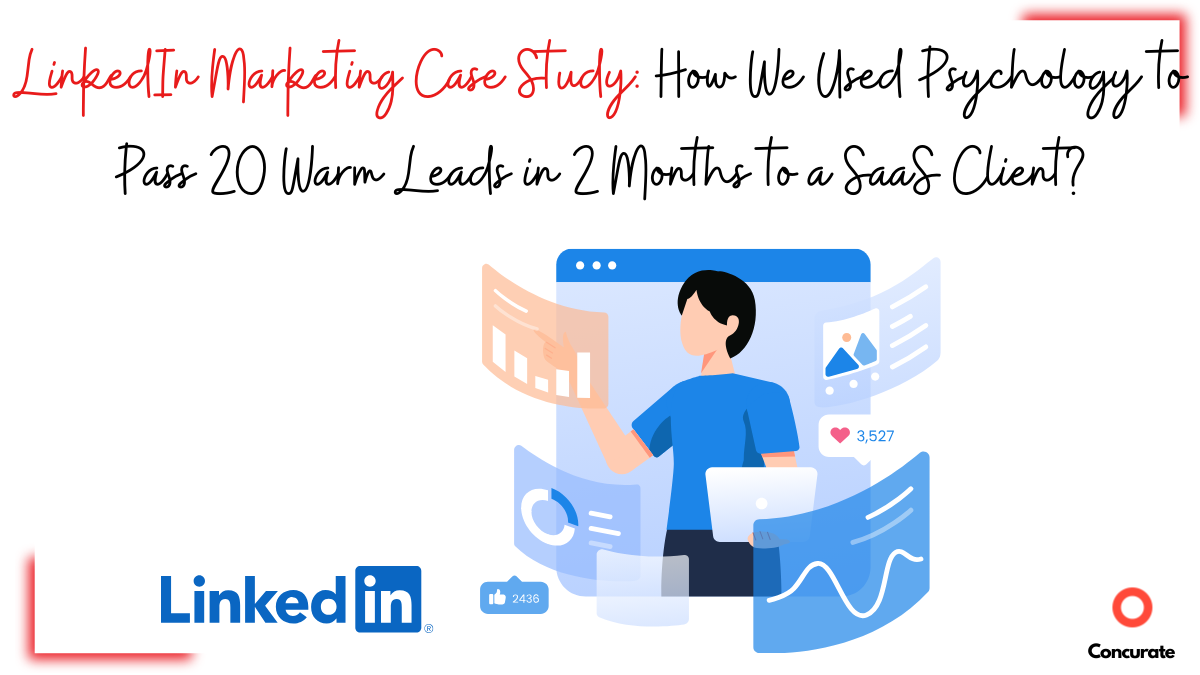| TL;DR: Grammarly SEO and content strategy drives over 27M monthly organic visits by combining five smart tactics. They capture organic traffic through high-volume, low-difficulty keywords, solve real user problems with pain point SEO and product embeds, and build topical authority with structured educational content. To boost conversions, the company tailors persona-based landing pages and uses always-on lead magnets that turn casual visitors into long-term users. |
When I first opened Grammarly in 2019, it was a handy grammar checker that I used to polish my final-year project documents. Six years later, I am now a B2B SaaS content strategist at Concurate, and I still rely on it every day.
What intrigues me the most is how Grammarly transformed into an SEO powerhouse. It drives 27 million organic visits every month (that’s 99% of total traffic) and ranks for 1 million organic keywords, as shown below.
So, I dug a little deeper and analyzed Grammarly seo and content strategy.
In the article, I’ll unpack the amazing methods I discovered and present those to you as five no-nonsense, actionable hacks. If you are a B2B SaaS brand, you can “steal” these hacks to supercharge your own growth.
Let’s dive in.
5 Steal-Worthy SaaS Growth Hacks Inspired by Grammarly SEO and Content Strategy
Grammarly has evolved far beyond just identifying typos and grammatical errors. It’s become the go‑to writing platform for over 30 million users and 70,000 professional teams worldwide.
But this growth wasn’t accidental. Its SEO and content strategy focuses on one core idea; to deliver precisely what users need when they need it the most.
Below are the five methods Grammarly uses to dominate organic search.
Use these five actionable hacks to drive awareness, engagement, and revenue of your B2B SaaS business.
- Targeting the Traffic Goldmine: Targeting low Keyword Difficulty (KD) and high search volume keywords to drive awareness.
- Applying Pain Point SEO with Product Embeds: Address real user queries related to grammar and integrate your tool naturally into the content.
- Building Topical Authority: Build educational content around primary topics and add subtopics to dominate Google rankings.
- Creating Persona-Based Landing Pages: Tailor messaging to different audience segments.
- Using Always-On Lead Magnets: Capture leads at every stage of the buyer’s journey.
#1 Targeting the Traffic Goldmine
One of the smartest trick in Grammarly SEO and content strategy is to target ultra-high-volume, low-KD keywords. This allows it to attract millions of visitors with minimal competition.
| 📌What is Keyword Difficulty? Keyword Difficulty (KD) is a metric that tells you how hard it will be to rank for a specific keyword on Google’s first page. It’s based on factors like competition, backlink strength, and domain authority. 0-20 (Easy): Low competition; very easy to rank. 21-50 (Medium): Some competition; rankable with valuable content and SEO. 51-75 (Hard): Competitive; will require strong backlinks and domain authority. 76-100 (Very Hard): Highly competitive; ranking here is tricky unless you’re a top brand or authority in the niche. |
For instance, below are a few keywords with high search volume and low keyword difficulty. Together, these five keywords are generating 204K+ organic traffic.
| Keyword | Search Volume | Keyword Difficulty | Organic Traffic |
| happy birthday wishes | 1710000 | 12 | 160459 |
| how are you | 106000 | 12 | 3954 |
| oxford comma | 94000 | 6 | 9558 |
| cancelled or canceled | 76000 | 9 | 2803 |
| to whom it may concern | 57000 | 1 | 3783 |
At first glance, these phrases seem unrelated to Grammarly’s core product.
So why does it rank for them? (As shown below, Grammarly ranks #1 for the keyword “happy birthday wishes.”
The Genius Behind This
Massive Organic Traffic with Minimal Effort: Focusing on low-KD keywords helps Grammarly avoid competition and capture massive traffic.
Creating Brand Awareness at Scale: A user searching for “Happy birthday wishes” isn’t looking for a grammar checker. However, when they click on Grammarly’s #1 ranking blog titled “185 Happy Birthday Wishes and Messages in English,” they find very well-written information. This helps Grammarly appear as an expert and, over time, builds trust and brand recall.
The Actionable Hack
Focus on high-volume, low-KD keywords, even if they seem slightly tangential. Write content for these keywords and use them as entry points to your ecosystem. Add powerful CTAs, tool demos, and internal links to engage the reader further.
#2 Applying Pain Point SEO with Product Embeds
Many of us, at one point in our lives, have Googled minor writing or grammar questions. Things like “its or it’s,” “canceled or cancelled,” or “how to write an introduction.”
Grammarly targets these searches with pain point SEO.
| 📌 What is Pain Point SEO? Pain Point SEO is a method to provide solutions to the specific problems your target audience is facing. Instead of focusing solely on generic keywords, you focus on what your potential customers are struggling with and searching on Google. 💡 Example: A business owner searching “How to fix slow website speed” is actively looking for ways to improve performance. They’re frustrated and need an actionable solution. |
To target these searches, Grammarly creates high-value content that addresses the issues while seamlessly embedding its tools inside the content.
For instance, the company dominates foundational grammar queries by ranking for essential topics like “Subordinating conjunctions” and then naturally promotes its grammar checker tool. A similar approach is taken for queries like “its or it’s,” “canceled or cancelled,” or “how to write an introduction.”
Grammarly uses the same approach for those searching for templates, such as “resignation letter effective immediately,” which directs users to Grammarly’s AI writing features, as shown below.
Source: Grammarly
The Genius Behind This
Aligns Search Intent with Product Usage: Visitors come for writing help and naturally discover Grammarly’s tools, turning readers into users.
High-Intent Traffic Converts Better: Visitors searching for templates or writing structure guides often need long-term writing assistance, which Grammarly provides with its tools.
Want to see this in action? Check out this blog, “Sprinklr’s Content Strategy: How It Captures 296K High-Intent Organic Traffic.”
The Actionable Hack
Identify the pain points your target audience is facing. Use pain point SEO to create SEO-optimized content around them. Embed product tools naturally inside educational content so that the readers can try your products (leading to more sign-ups and demo requests).
Concurate applied the same methodology to generate 500+ sign-ups for its legal tech client. Read about it here in the case study, “B2B SaaS Content Marketing – From Solid Keyword Strategy to 500+ User SignUps (Triangle IP Case Study).”
#3 Building Topical Authority
One of Grammarly’s biggest growth levers is its topical authority in the English language and writing niche. Grammarly systematically structures its content into primary topics with interlinking subtopics. This strategy signals Grammarly as the ultimate authority on the topic to Google, which helps the company rank for numerous keywords related to foundational grammar concepts.
For example, the main topic, “Parts of Speech,” has numerous subtopics like “Verbs: The Definitive Guide” and “What Is a Noun? Definition, Types, and Examples.”
The main topic, “Writing Tips,” has subtopics like “How to Write an Introduction” and “How to Write a Conclusion.”

Source: Grammarly
The Genius Behind This
Google Recognizes Grammarly as the #1 Authority: Deep, structured educational content earns higher SEO rankings.
Users Stay on the Site Longer: Interlinking sub-topics keeps visitors engaged, which reduces bounce rates.
More Opportunities for Product Placements: Every article very subtly integrates one of Grammarly’s tools.
The Actionable Hack
Identify foundational topics in your SaaS domain and build educational content around them. Interlink all relevant subtopics to boost rankings and engagement. Place your product between texts to drive actions.
Check out how CrowdStrike uses the same strategy to generate 1.1M+ organic visitors every month.
#4 Creating Persona-Based Landing Pages
The one-size-fits-all approach doesn’t work in today’s time, where every consumer expects a personalized experience. That’s why Grammarly has created customized landing pages for different user segments. This tailored approach ensures every visitor finds content that speaks directly to their needs.
Feature-specific pages like the AI detector, plagiarism checker, and sentence rewriter attract users searching for specific tools. Device-specific pages educate them on Grammarly’s compatibility across desktop, mobile, and browser extensions.
Team-size-based pages address individuals, teams, and enterprises’ unique needs, while function-based pages customize messaging for different roles like support, sales, IT, etc.
Shown below are the function-based landing pages.
Source: Grammarly
The Genius Behind This
Every User Finds Their Perfect Fit: Tailored landing pages lead to higher conversion rates. Optimized copy, CTAs, and benefits increase the likelihood of conversions.
Seamless Product Discovery: Users searching for a grammar checker, AI writing assistant, or plagiarism detector are guided to the exact tool they need, which makes the buying process seamless.
The Actionable Hack
Identify your buyer’s personas and create dedicated landing pages for each. Optimize the page copy, CTAs, and visuals to match their unique pain points. Embed product demos or free trial links to let users experience your solution instantly.
To explore how we utilized customized landing pages to help our clients establish a strong presence in over 60 markets, read our in-depth case study, “Programmatic SEO Case Study: How We Helped a Network Training Provider Dominate 60+ Markets.”
#5 Using Always-On Lead Magnets
In my analysis, I observed that the CTAs on Grammarly’s website don’t feel like pushy salespeople. Instead, the company leverages an always-on lead magnet system (low friction asks) that brings users from multiple channels and nurtures them into long-term customers.
Grammarly offers free accounts so that users can sign up and experience the product without any monetary commitment. Free trials allow users to explore premium features and get hooked. “Contact Sales” CTA enables B2B outreach for more significant deals. And finally, educational lead magnets like reports, eBooks, and insights attract professionals looking to improve their writing.
Source: Grammarly
The Genius Behind This
Frictionless Onboarding Experience: Users don’t feel pressured to pay and naturally see Grammarly’s value. Once users integrate Grammarly into their regular workflow, the tool becomes indispensable. This is where the users become primed for conversion.
Multiple Lead Capture Paths: Whether self-serve for individuals or sales-assisted for enterprises, Grammarly ensures every visitor has a conversion path.
The Actionable Hack
Create low-friction, high-value lead magnets like a free trial, a freemium model, or an educational resource. Tailor your lead capture strategy to different personas to serve different user categories.
Level Up Your Content Marketing Game Like Grammarly With Concurate
Grammarly has done what only a few SaaS businesses have been able to crack–growing from a modest subscription-based model into a $13 billion business. Adding another layer to the Grammarly SEO and content strategy is its email marketing strategy that delivers true value to each of its users.
Want to scale like Grammarly? Concurate can help you achieve similar results with SEO and content marketing strategies tailored to your unique needs.
But don’t just take our word for it.
We helped Triangle IP, a SaaS patent management tool provider, generate 500+ sign-ups through high-quality blog content and establish authority in the patent management space.
Here’s what Thomas Franklin, founder of Triangle IP, has to say about us.
Want to know how your SEO and content strategy can drive similar results? Book a meeting with us today, and let’s create a custom roadmap for your success.
And if these five hacks are not enough and you want to supercharge your SaaS growth in 30 days, download our 30 Days 30 Hacks PDF here.
Frequently Asked Questions About Grammarly’s SEO and Content Strategy
Marketers often ask how these pieces work together, why certain tactics succeed, and what lessons SaaS companies can replicate. Below, we’ve answered the most common questions about Grammarly’s SEO playbook and its impact on growth.
Q1. What Is Grammarly’s Core SEO and Content Strategy?
Grammarly’s strategy centers on capturing user intent through five pillars: low-KD, high-volume keywords, pain-point SEO with tool embeds, topical authority, persona-based landing pages, and always-on lead magnets.
Q2. Why Does Grammarly Target Keywords That Seem Unrelated to Grammar Checking?
By ranking for high-volume, low-difficulty keywords like “happy birthday wishes,” Grammarly drives massive top-of-funnel traffic and builds brand awareness at scale.
Q3. What Is Pain Point SEO, and How Does Grammarly Use It?
Pain Point SEO involves solving users’ immediate problems, such as “its vs it’s” or “how to write an introduction.” Grammarly seamlessly integrates its tools into these answers, converting readers into users.
Q4. How Does Grammarly Build Topical Authority?
Grammarly structures its content around major themes, such as “Parts of Speech,” and links them to detailed subtopics. This signals expertise to Google, boosts rankings, and increases on-site engagement.
Q5. Why Are Persona-Based Landing Pages Important in Grammarly’s Strategy?
These pages personalize messaging for different roles, team sizes, or feature needs. This tailored approach ensures every visitor is guided toward the exact tool they require, improving conversions.
Q6. What Role Do Lead Magnets Play in Grammarly’s Growth?
Grammarly uses always-on lead magnets like free trials, freemium accounts, and educational content. These low-friction CTAs make adoption easy and create multiple conversion paths for individuals and enterprises.
Q7. How Can SaaS Companies Appear in AI Search Results Like ChatGPT or Perplexity?
AI tools favor content that directly answers buyer questions, keeps product pages transparent, earns citations on trusted sites, and stays up to date. To show up, SaaS founders must align their content with high-intent queries and distribute proof points across multiple credible sources.
👉 Want a practical framework? Download our 13 Point Checklist to Optimise SaaS Blogs for Dominating AI Searches.
Disclaimer:
The data and insights presented in this report are based on third-party platforms and tools. The information may not reflect the most up-to-date metrics or precise figures. Use this as a reference and verify with primary sources where necessary.







